Turquoise Stones
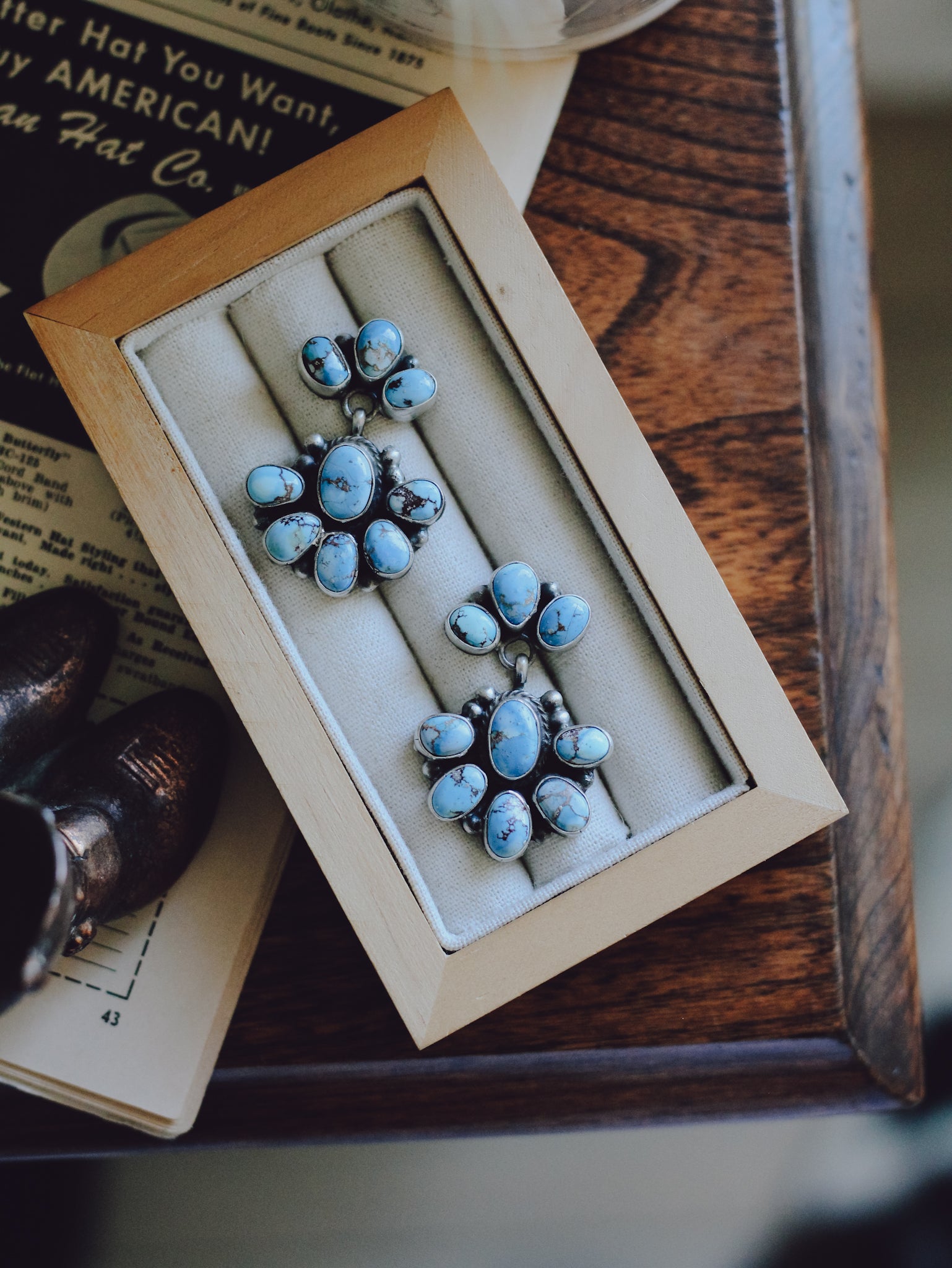
Golden Hills
Golden Hills Turquoise is easy to spot thanks to its unique periwinkle to icy lavender-blue hues, often accented with a warm, golden to rust-brown matrix.
Mined in Kazakhstan at the Golden Hills Mine, this turquoise is relatively new to the market, first appearing in the U.S. around 2013. Because mining is seasonal due to extreme weather, Golden Hills Turquoise is considered rare and highly collectible.
Fun Fact: Golden Hills Turquoise forms in limestone, similar to some of the highest-quality turquoise mines in the world, giving it excellent hardness and stability.
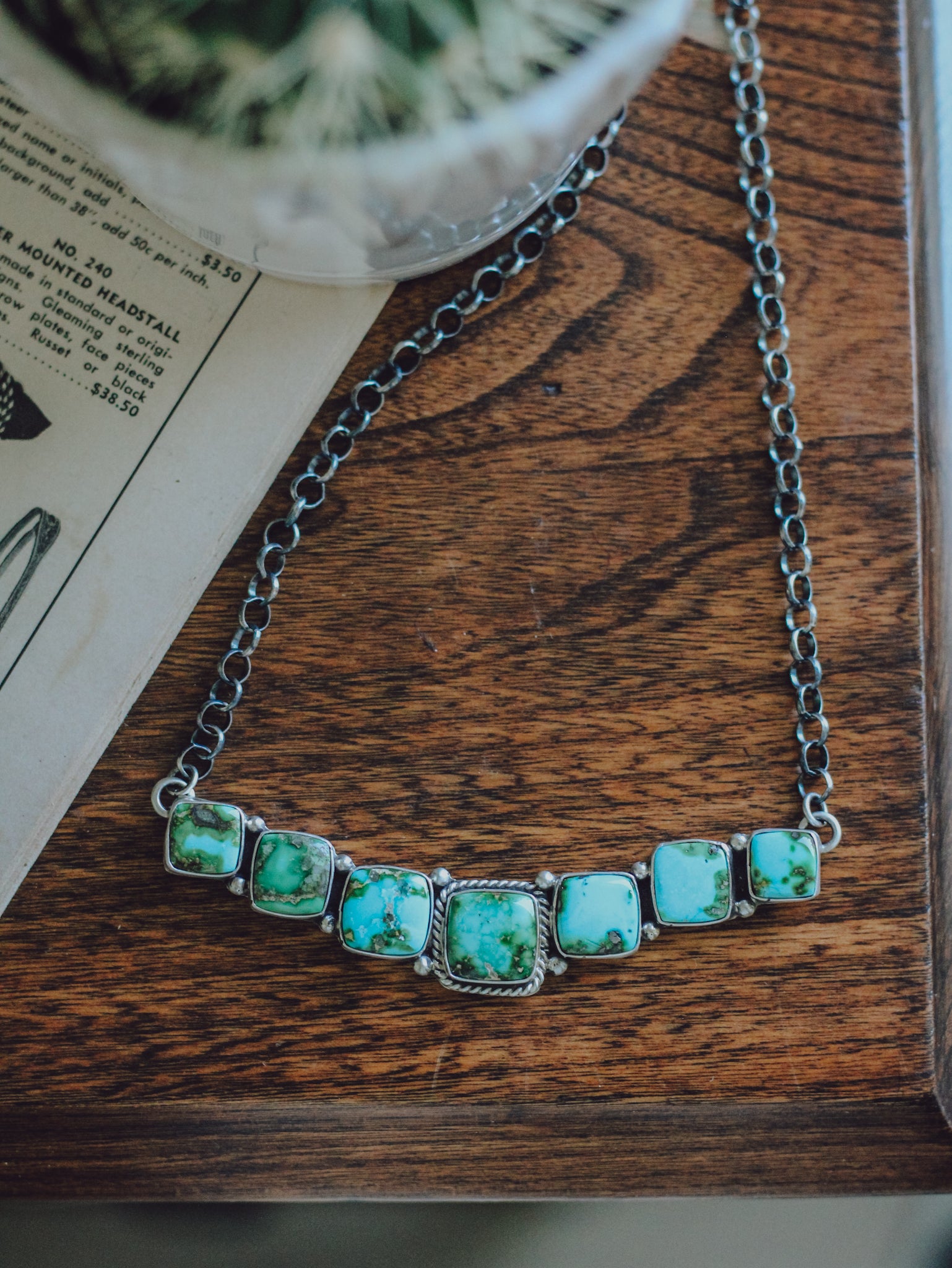
Sonoran Gold
Sonoran Gold Turquoise is known for its vibrant, fresh color palette — ranging from bright lime greens to vivid turquoise blues, often with both colors blending together in a single stone. It typically features minimal matrix, but some stones show golden or brown webbing that adds character and depth.
Mined in Sonora, Mexico, it’s a relatively new discovery in the turquoise world but has quickly gained popularity for its bold, refreshing look.
What makes Sonoran Gold Turquoise unique is its high-polish finish and the way its colors shift from blue to green, giving each stone a lively, almost glowing appearance.
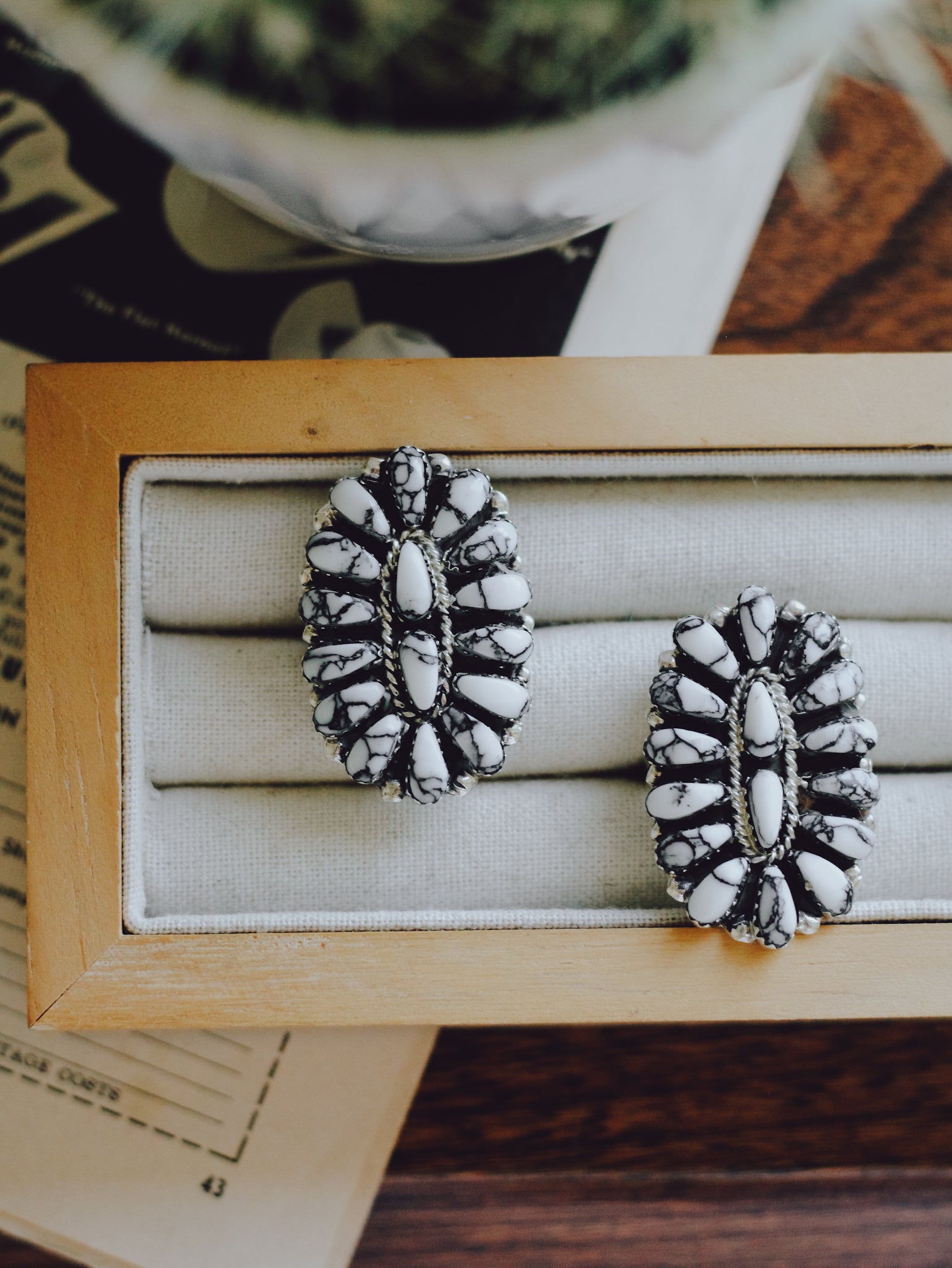
White Buffalo
Known for its striking high-contrast appearance — bright white stone with bold black or brown matrix, White Buffalo is highly sought after in the world of Turquoise collectors.
Mined exclusively near Tonopah, Nevada, White Buffalo is rare and highly sought after for its dramatic, monochrome look. Its bold patterns make it a favorite for statement jewelry, offering a modern, edgy twist on traditional Southwestern designs.
What sets White Buffalo apart is its clean, graphic beauty, with patterns ranging from sharp, high-contrast veins to soft, smoky webs.
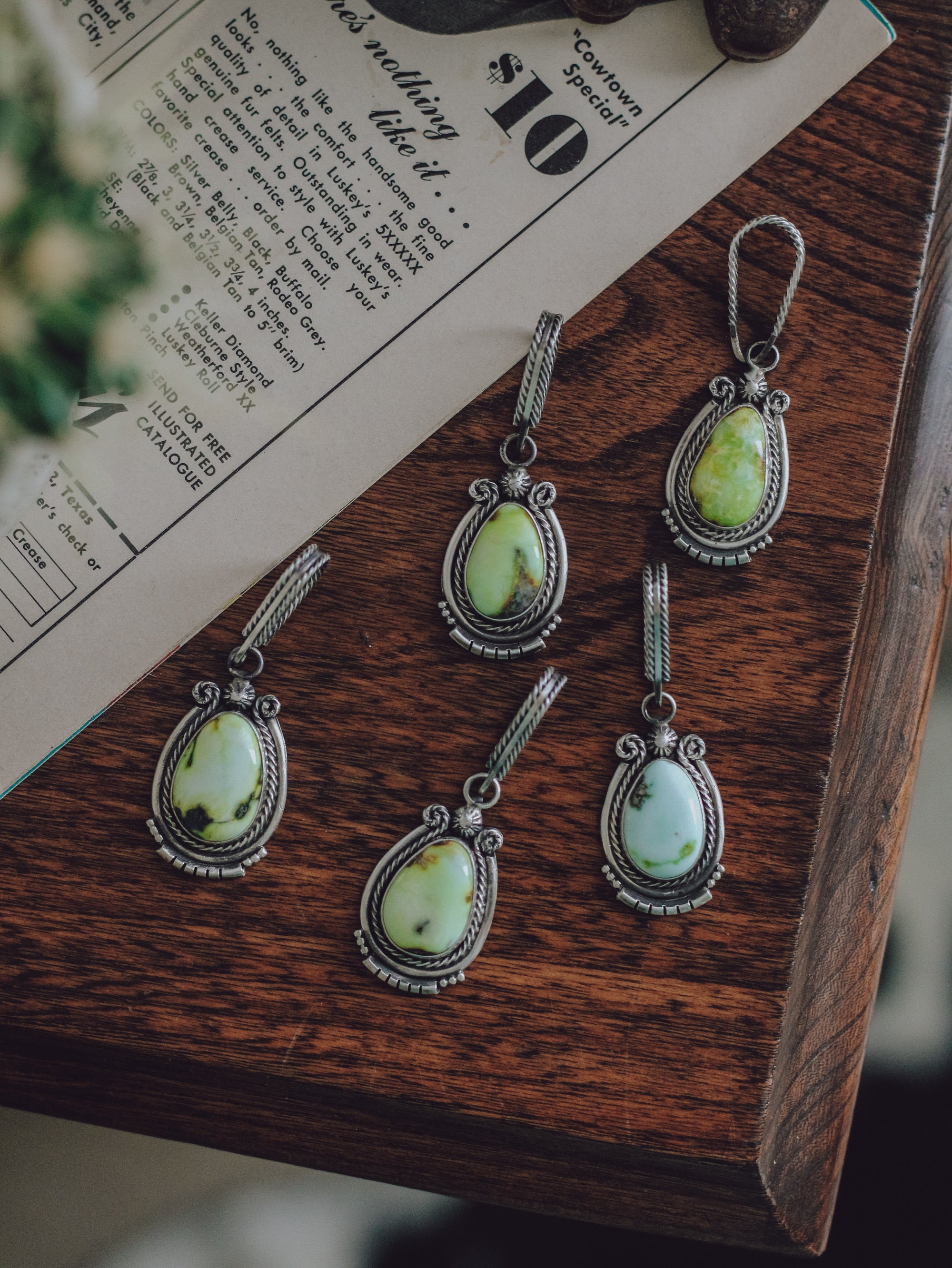
Palomino
Palomino Turquoise is recognized for its distinctive warm, creamy golden tones often blended with soft blues and greens. Its colors can range from buttery yellows to pale teals, frequently accented by light to dark brown matrix. This palette gives it a sunbaked, desert-inspired feel that sets it apart from more traditional turquoise.
Mined in Nevada, Palomino Turquoise is relatively rare and lesser-known, making it a hidden gem for collectors and designers seeking something different. Its earthy, understated tones make it versatile and easy to wear, pairing beautifully with both silver and gold settings.
Fun Fact: Palomino Turquoise is named for the golden tones reminiscent of the Palomino horse, known for its creamy coat and golden sheen.
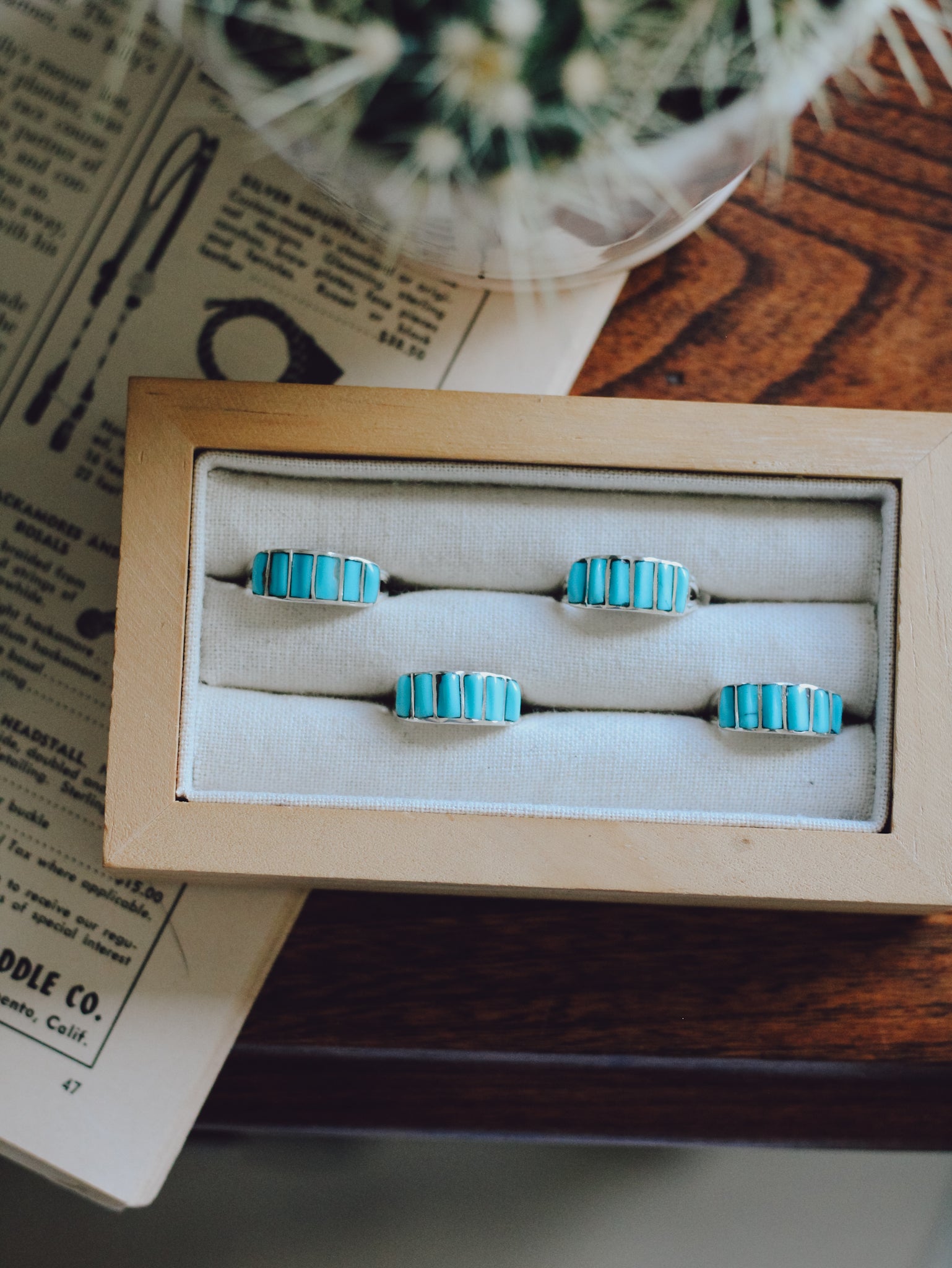
Sleeping Beauty
Pure, robin’s egg blue color with little to no matrix, Sleeping Beauty Turquoise is one of the most sought-after turquoise varieties in the world.
Mined near Globe, Arizona, the Sleeping Beauty Mine was named after a nearby mountain that resembles a sleeping woman. Though the mine closed in 2012, its turquoise remains highly collectible and prized for its consistent, vivid hue.
Fun Fact: Sleeping Beauty turquoise became especially popular in the 1950s and 60s thanks to Zuni and Navajo silversmiths, who favored its bright, clean look for intricate inlay work.

Royston
Royston Turquoise is treasured for its stunning range of colors, from deep forest greens to vibrant blues, often blending together in a single stone. Its distinctive golden brown matrix adds a rugged, natural character that makes each piece truly one-of-a-kind.
Mined near Tonopah, Nevada, the Royston Mine has been family-operated since the early 1900s. It remains one of the oldest and most respected turquoise mines in the United States.
What sets Royston Turquoise apart is its striking color contrast — the vibrant turquoise against the rich, earthy matrix creates a bold, organic look that’s highly sought after by collectors and artisans alike.
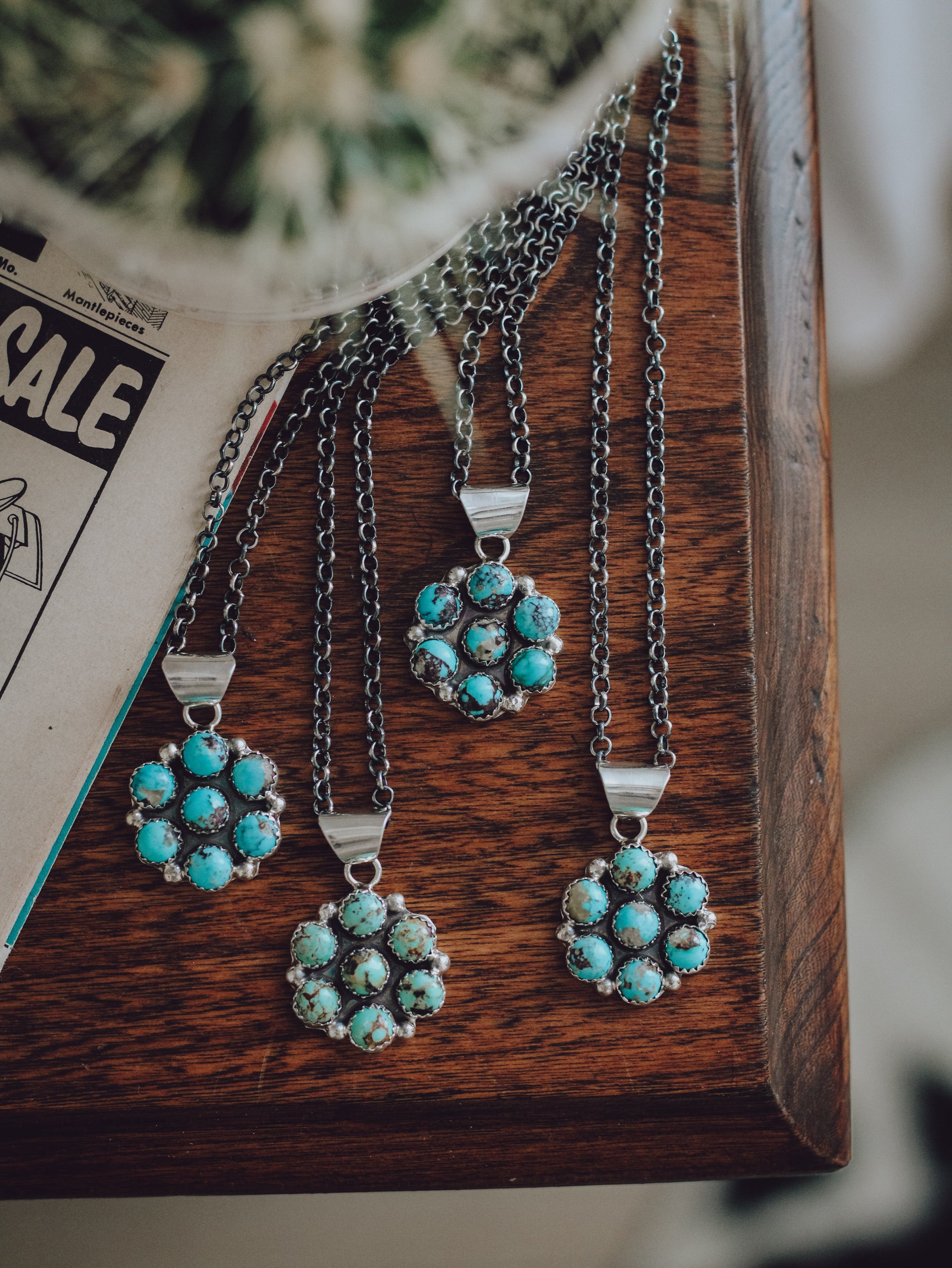
Kingman
Mined just outside Kingman Arizona and known for its beautiful colors, Kingman turquoise ranges from pale to dark blue, as well as shades of green, with matrixes being white, light brown, or black and even sometimes red or yellow.
Considered as one of the most popular turquoises in the world, Kingman turquoise is also one of the most easily recognizable American turquoises to several turquoise enthusiasts and collectors around the globe.
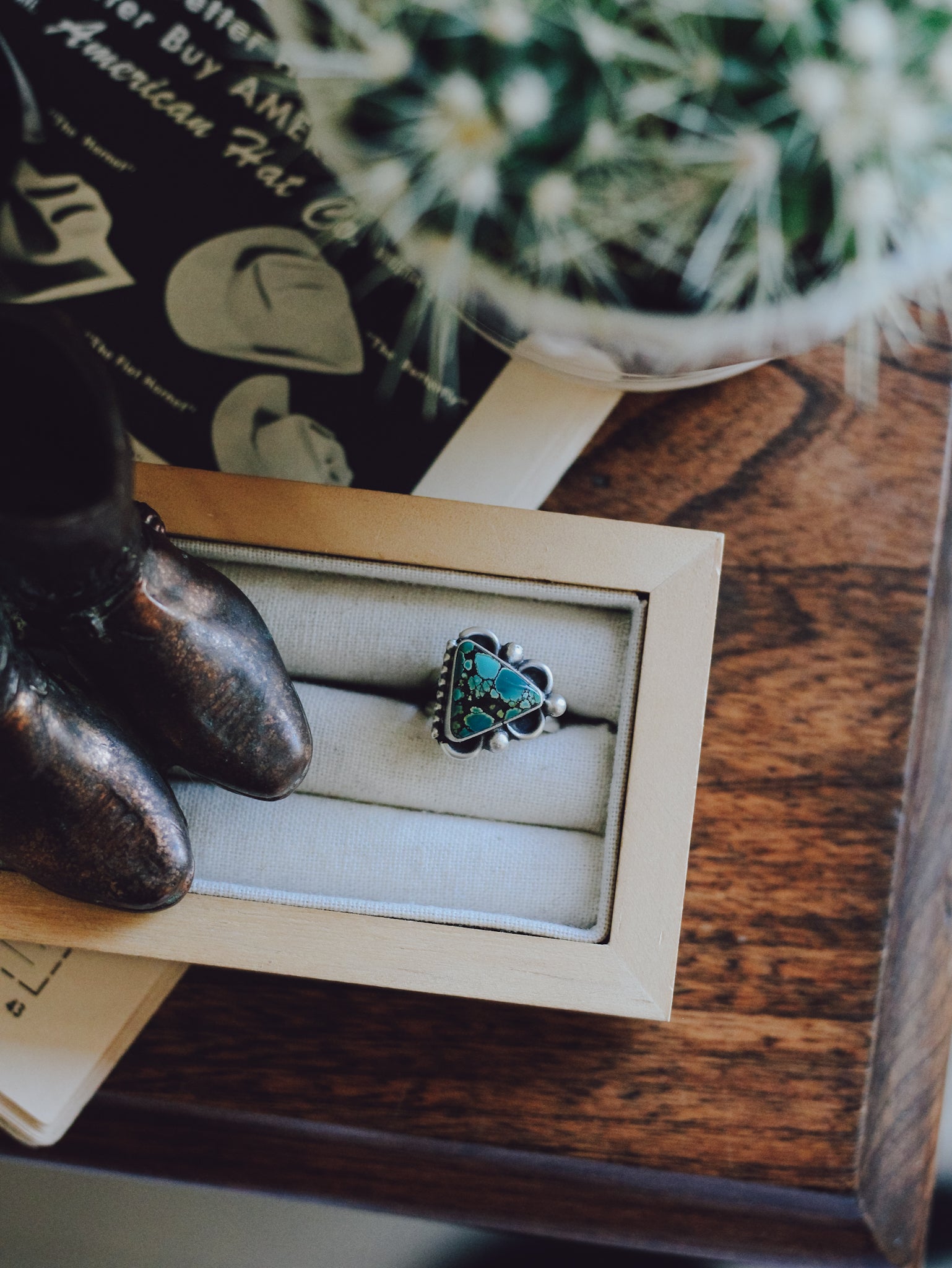
New Lander
New Lander Turquoise is prized for its bold patterns and incredible color variety. Ranging from bright lime greens and yellows to soft blues, New Lander is contrasted with an intricate black or brown spiderweb matrix. Some stones even feature orange and cream tones, making each piece a miniature work of art.
Mined in Nevada near the historic Lander Blue Mine, New Lander is technically considered a type of chalcosiderite or faustite, closely related to turquoise. Though not true turquoise by mineral definition, it’s treasured for its striking, painterly appearance.
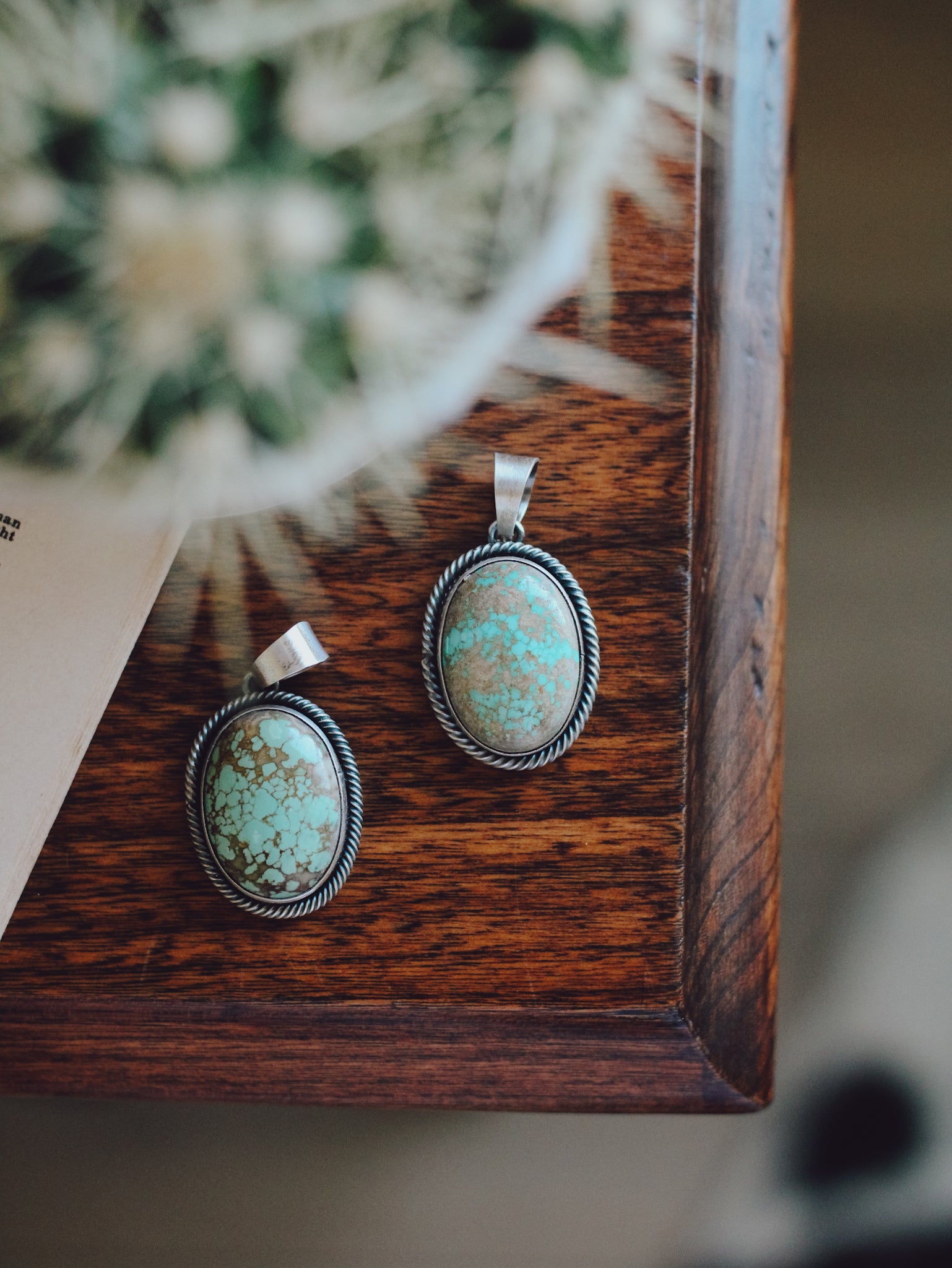
Number 8 (#8)
#8 Turquoise is known for its light blue to blue-green color, featuring a distinctive, bold spiderweb matrix in shades of golden brown to deep rust.
Mined in Nevada’s Carlin area, the #8 Turquoise Mine was first discovered in the 1920s and became especially famous during the 1950s and 60s. The mine closed to turquoise production decades ago, making genuine #8 Turquoise increasingly rare and highly sought after by collectors and jewelers.
In Native American jewelry, especially Navajo and Zuni work, #8 Turquoise is prized for its bold patterns and traditional desert hues. It pairs beautifully with sterling silver in both vintage and modern designs.
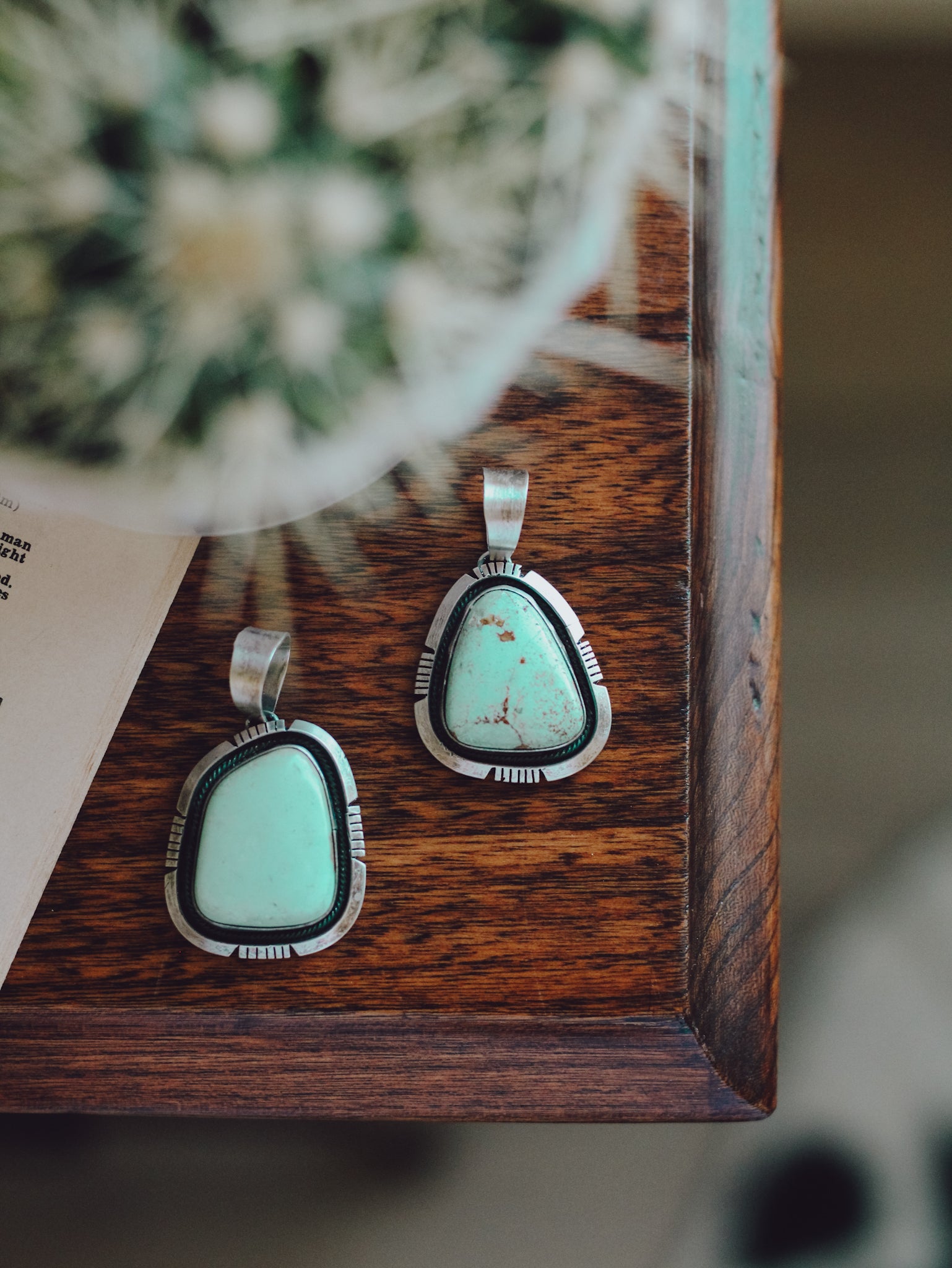
Thunder Mountain
Thunder Mountain Turquoise is admired for its rich, striking color palette — ranging from deep electric blues to bold polychrome stones with golden or red matrix. Many pieces display dramatic black webbing, creating eye-catching contrast and depth.
Mined in Esmeralda County, Nevada, Thunder Mountain is a rare and limited turquoise source, making its stones especially collectible among jewelers and enthusiasts.
What makes Thunder Mountain Turquoise unique is its exceptional hardness and high silica content, allowing for a natural high-polish finish. Its vivid colors and intricate patterns give each stone a powerful, one-of-a-kind presence.
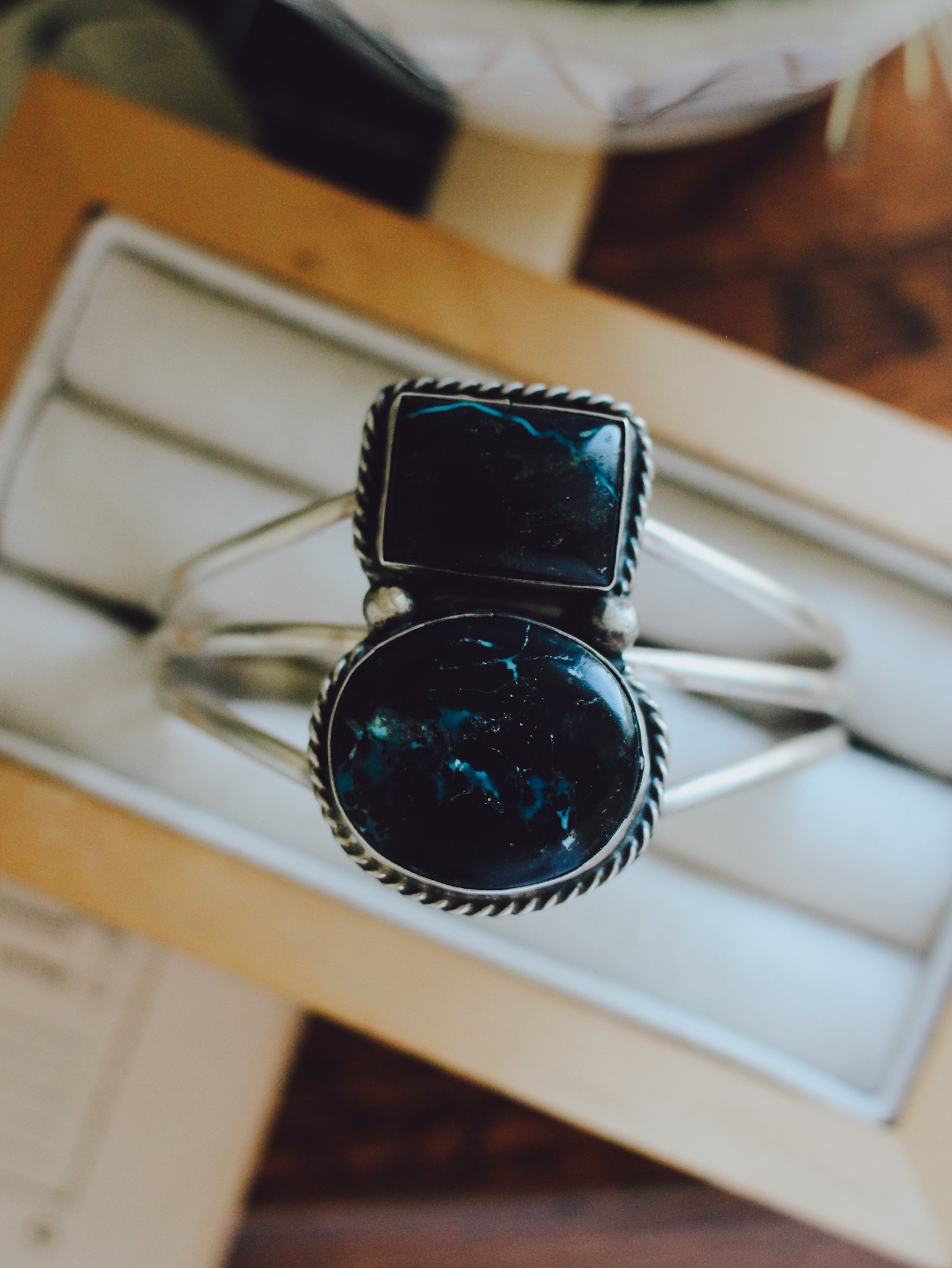
Blue Moon
Blue Moon Turquoise is known for its soft yet striking palette — most often showing sky-blue tones with delicate black or dark brown matrix. Some stones display lighter blue shading, giving them a dreamy, moonlit appearance.
Mined in Nevada, Blue Moon is a small-production turquoise, making high-quality pieces increasingly rare and collectible. Its limited availability has made it a favorite among collectors and jewelry makers who value authenticity and character.
What makes Blue Moon Turquoise unique is its balance of gentle blue hues and intricate matrix patterns, offering a timeless, classic look that pairs beautifully in fine jewelry.
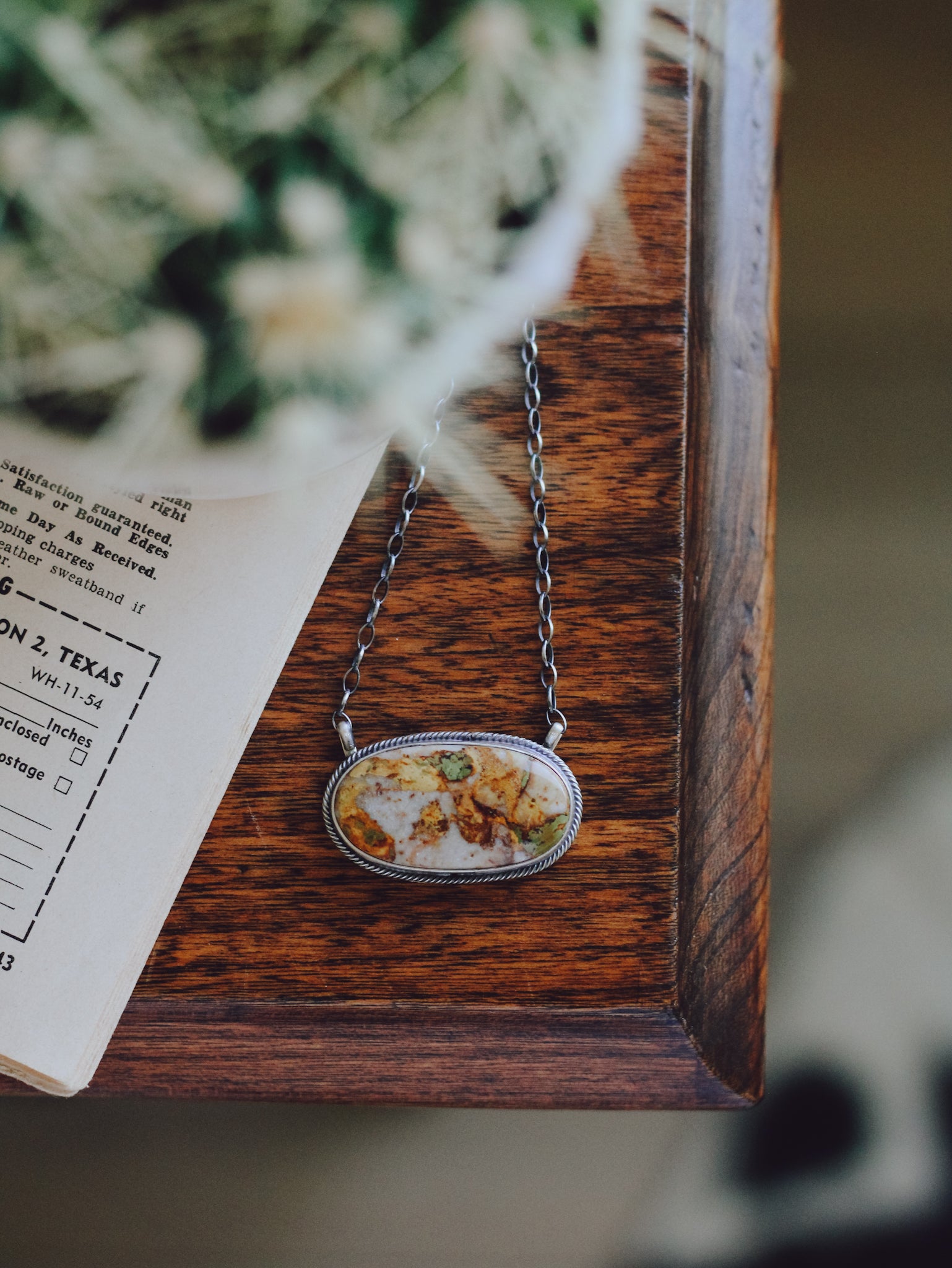
Boulder
Boulder Turquoise is instantly recognizable for its earthy, natural look — with vibrant veins of turquoise running through the host rock. The contrast of bright blues and greens against deep brown or golden matrix creates a striking “river in stone” effect.
Mined in Nevada, Boulder Turquoise is formed when turquoise deposits occur within the surrounding rock, rather than as a solid vein. This makes each stone completely unique, with patterns that feel raw and organic.
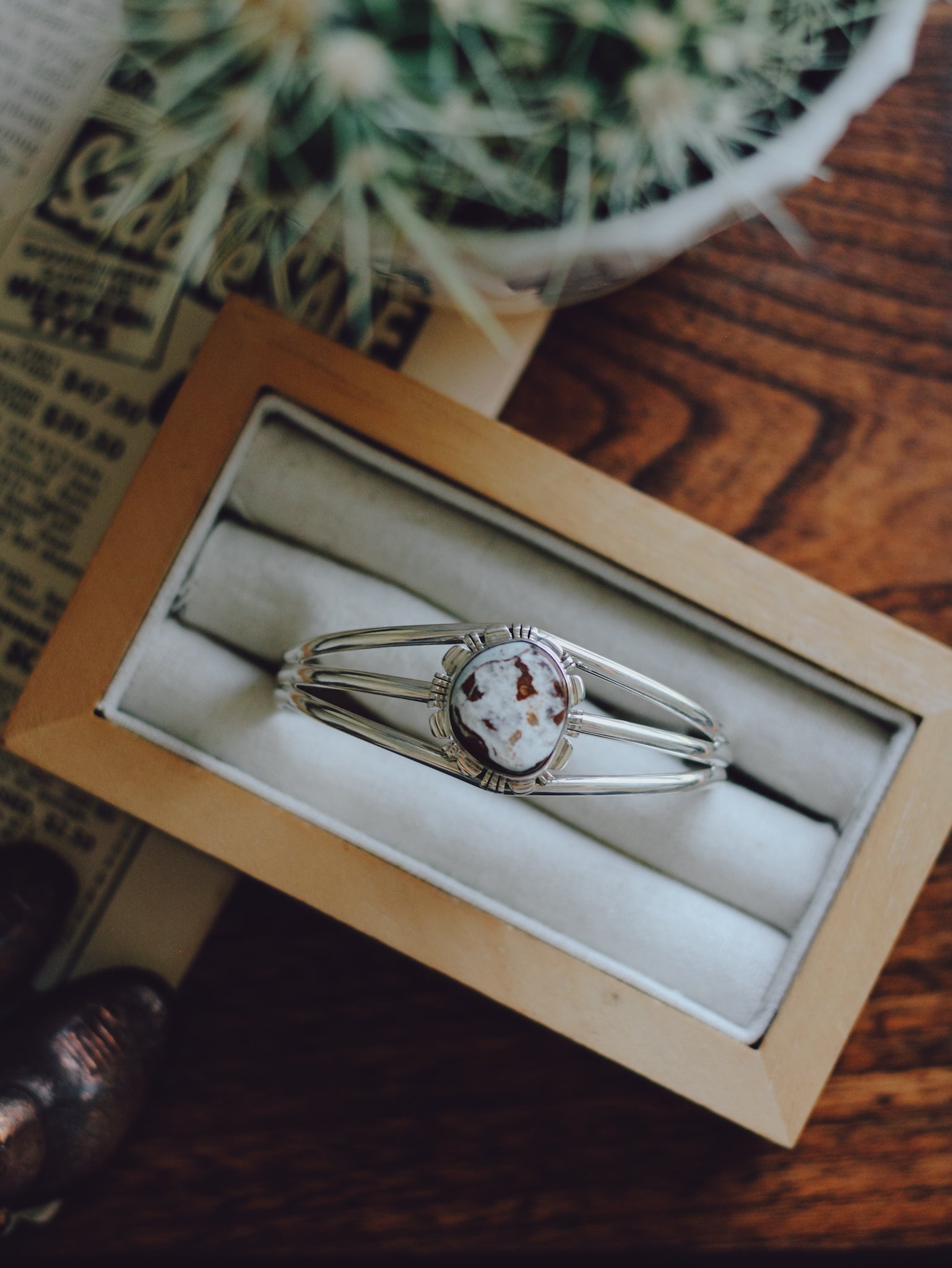
Wild Horse
Often called “Wild Horse Turquoise,” this stone isn’t actually turquoise — it’s a unique blend of magnesite and hematite discovered near Globe, Arizona in the 1990s. Its bold white and brown contrast instantly stands out, earning it a special place in Southwestern jewelry.
Each stone is completely one-of-a-kind, with patterns that range from delicate veining to dramatic patches.
Wild Horse features a creamy white base streaked or webbed with deep brown or reddish matrix, resembling the markings of a paint horse - hence it's name.
COMPOSITE STONES
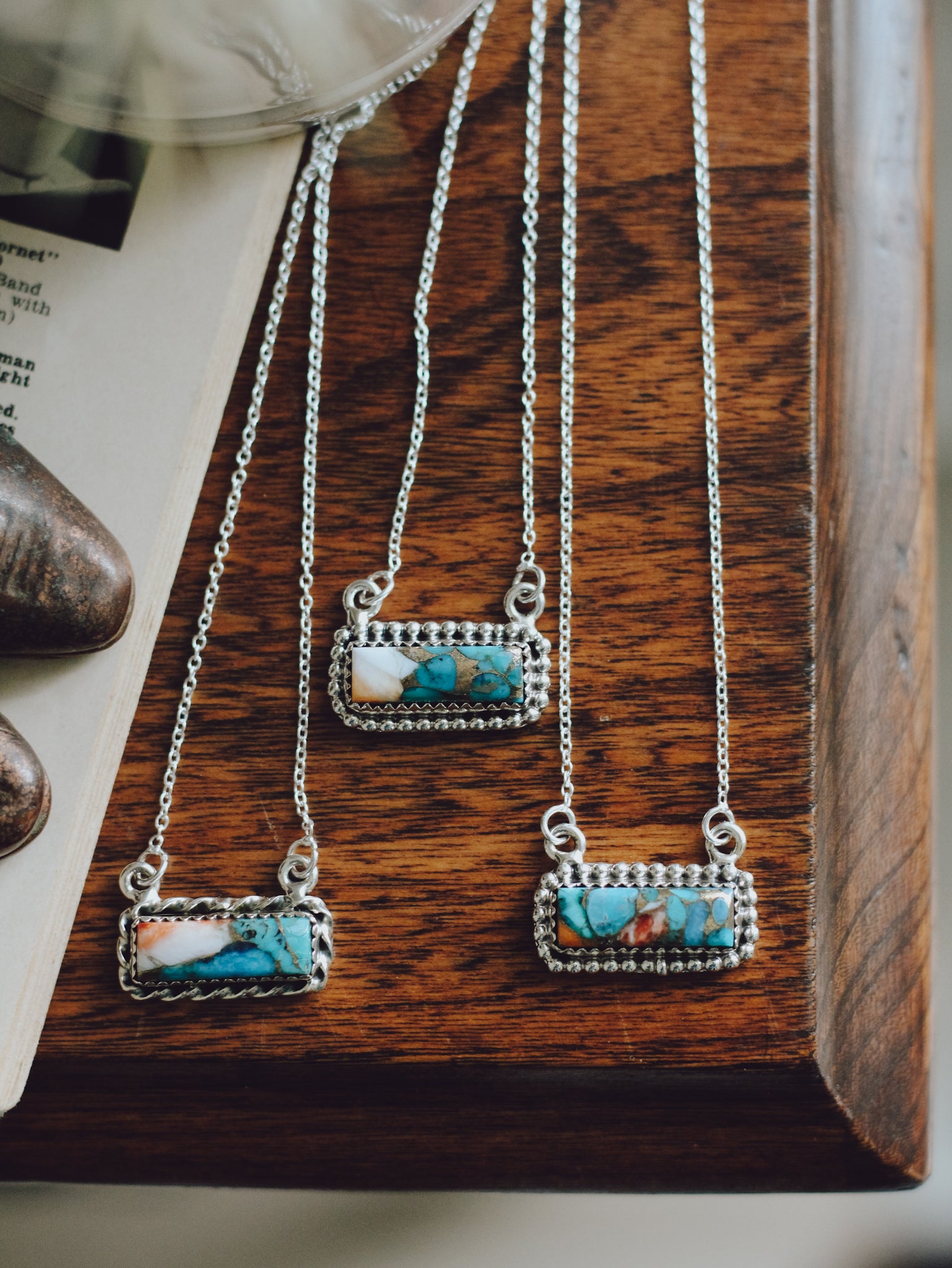
Compressed spiny oyster turquoise
Spiny Oyster Turquoise is a composite stone that combines vibrant pieces of spiny oyster shell with turquoise, often accented by bronze or copper veining.
This unique material is handcrafted by combining stabilized turquoise (often from Arizona’s Kingman Mine) with the colorful shells of the spiny oyster. The combination is compressed and bonded, creating a durable and highly distinctive stone.
What sets Spiny Oyster Compressed Turquoise apart is its vivid, ocean-meets-desert color palette and its rich connection to Southwestern jewelry traditions. It brings together two natural elements long cherished by Native American artisans.
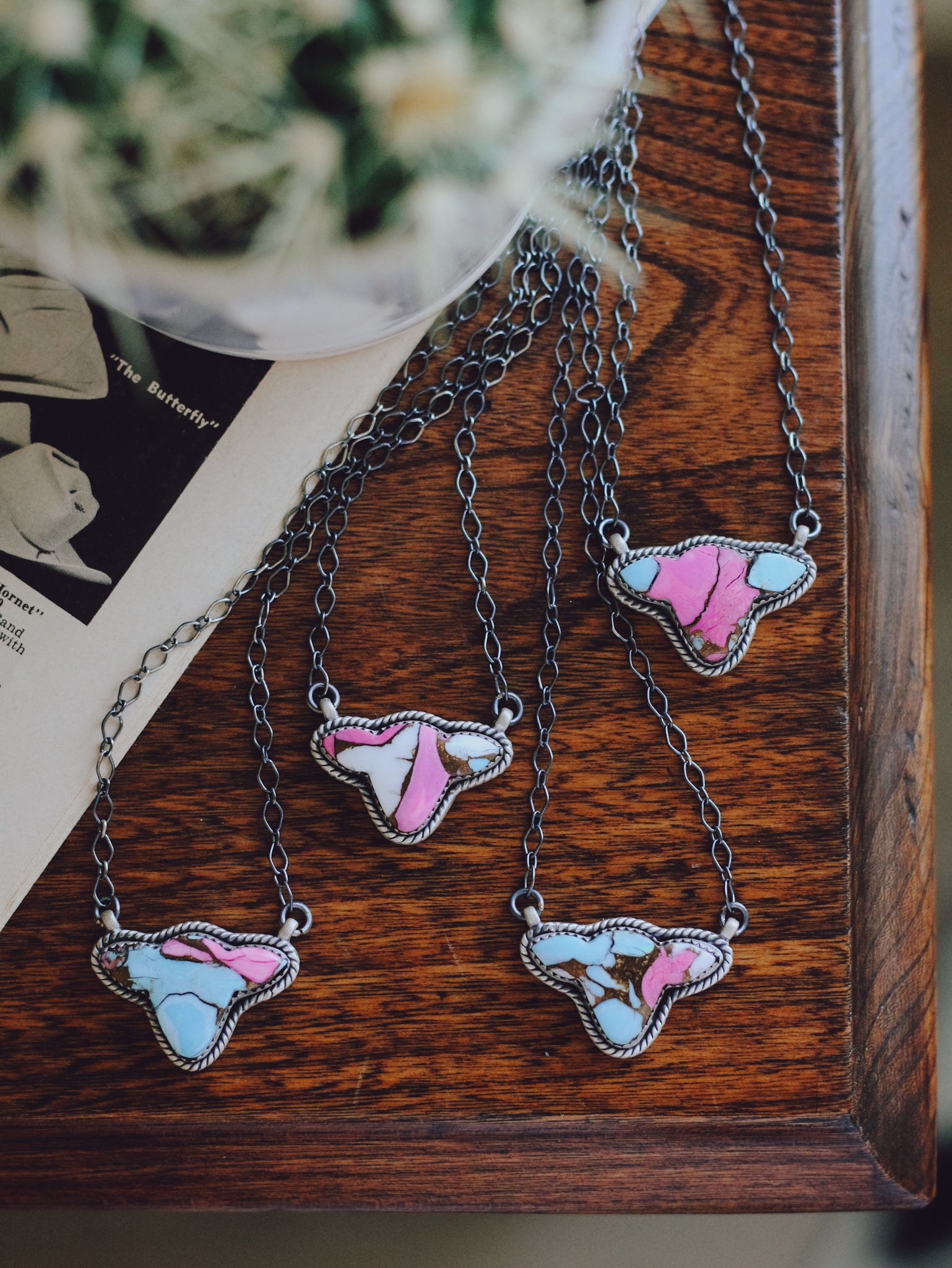
Cotton Candy
Cotton Candy Mohave stones are known for their whimsical blend of bright pinks, soft blues, and sometimes hints of lavender, all interwoven with metallic copper or bronze veining. This playful, candy-colored combination gives the stone its name — it truly looks like a sweet treat turned into stone.
Crafted using natural turquoise from the Kingman Mine in Arizona, Turquoise is stabilized, dyed in vibrant hues, and bonded with metallic veining through a special process. Though enhanced, the base material remains genuine turquoise, making it a fusion of natural beauty and artistic innovation making it perfect for those who love bright, unconventional jewelry with a bit of flair.
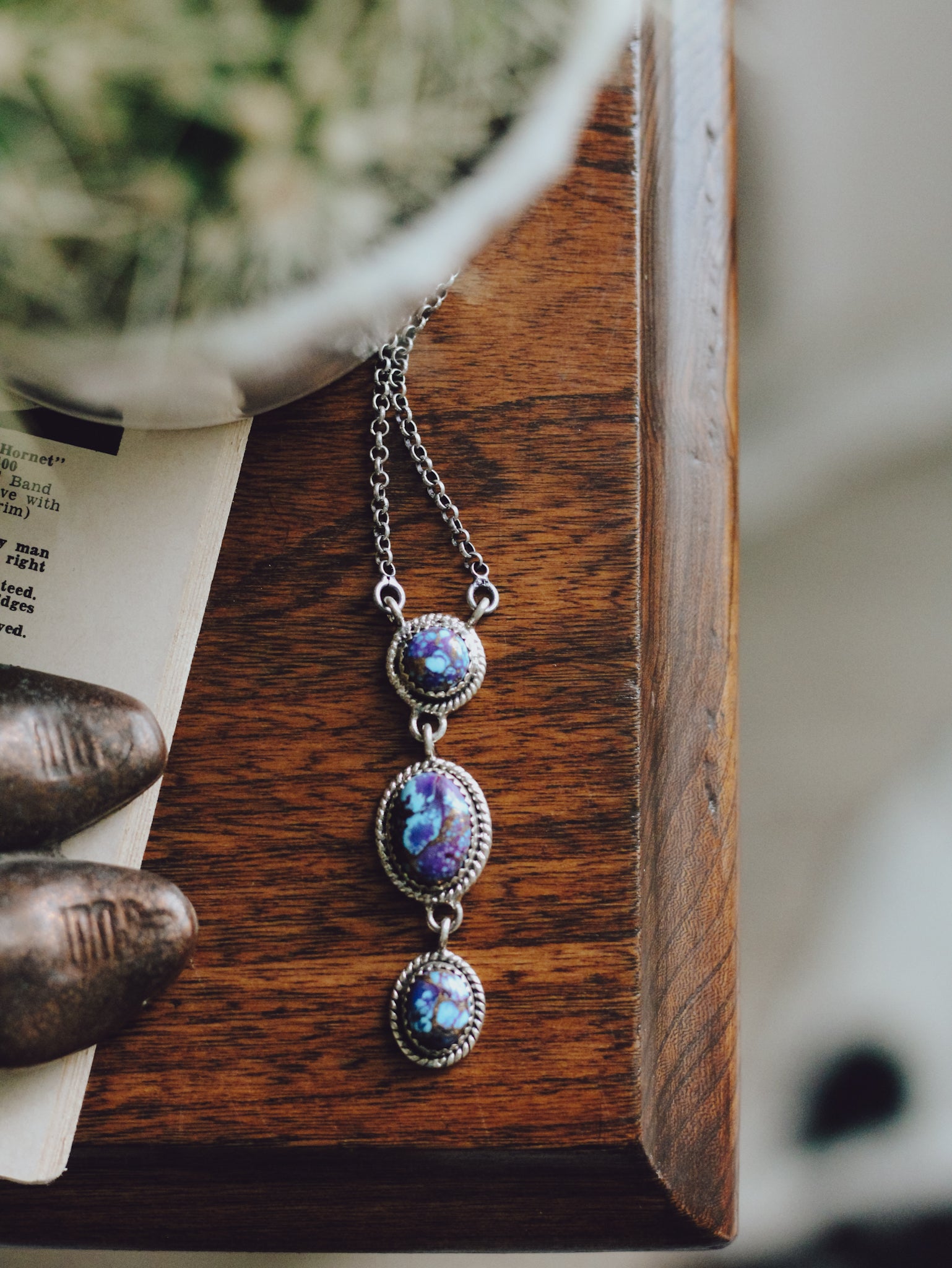
Purple Mohave
Known for its rich, vibrant purple color paired with a striking copper or bronze matrix, Purple Mohave is a head turner. This eye-catching stone isn’t naturally purple; it’s created by taking stabilized turquoise and infusing it with purple dye, often blended with other natural stones and metallic veining for added drama.
Mined in Arizona’s Kingman region, the base turquoise comes from the Kingman Mine. The vivid purple hue is a modern innovation, designed to meet demand for bold, colorful alternatives to traditional blue turquoise.
What sets Purple Mohave apart is its metallic matrix — the copper or bronze veins shimmer beautifully against the rich purple, creating a luxe, contemporary look.
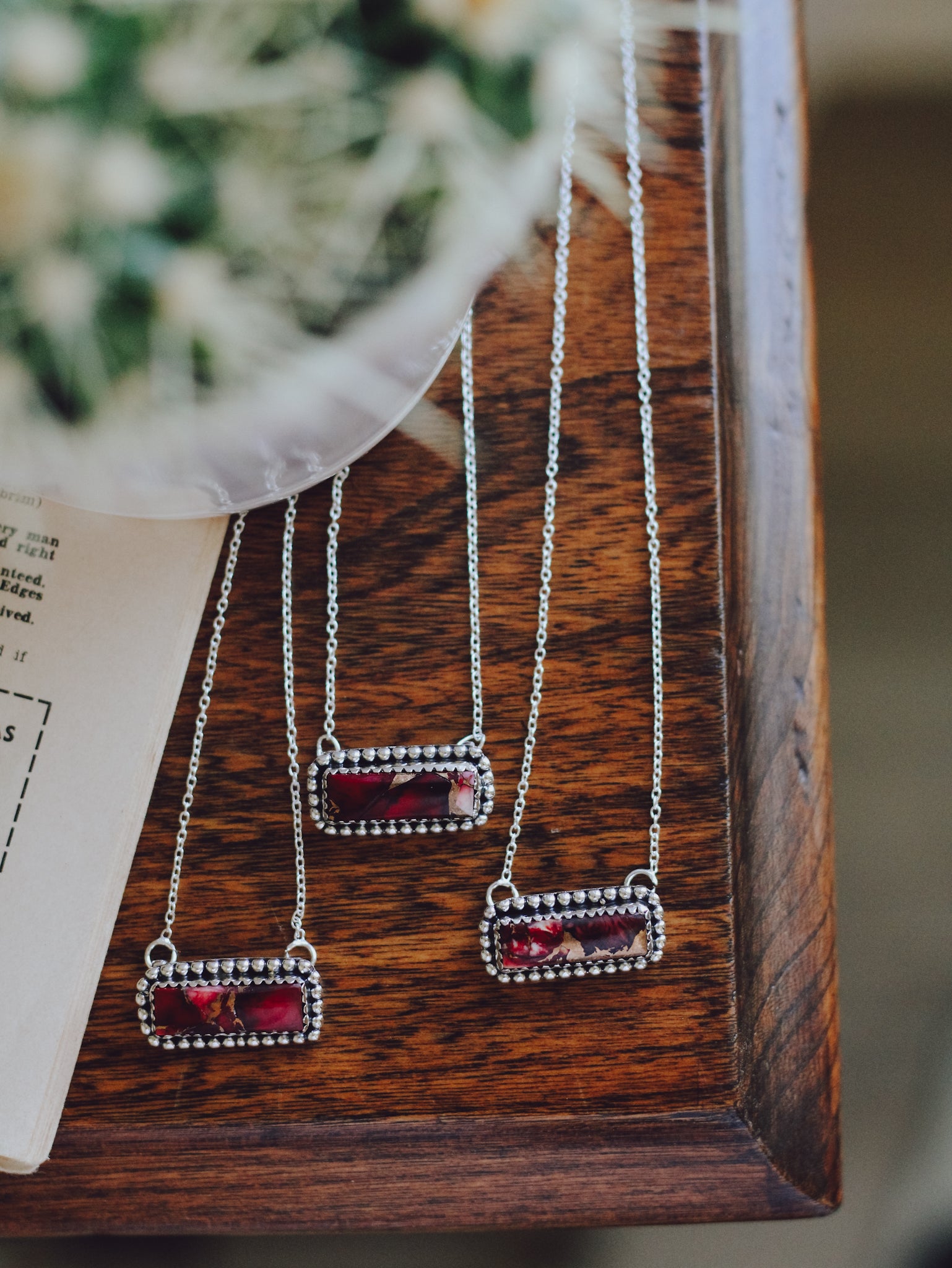
Rose Dahlia
Rose Dahlia Turquoise is prized for its soft, romantic hues — ranging from delicate pinks to muted mauves and rich reds. These tones are paired with subtle veining, giving the stone a dreamy, watercolor-like appearance.
Rose Dahlia is a composite stone made by blending natural turquoise with other minerals and dyes to achieve its unique, pastel palette.
Rose Dahlia Turquoise is a feminine, modern take on classic turquoise — offering a softer, more fashion-forward option for those who love the look of turquoise but want something more delicate and unique.
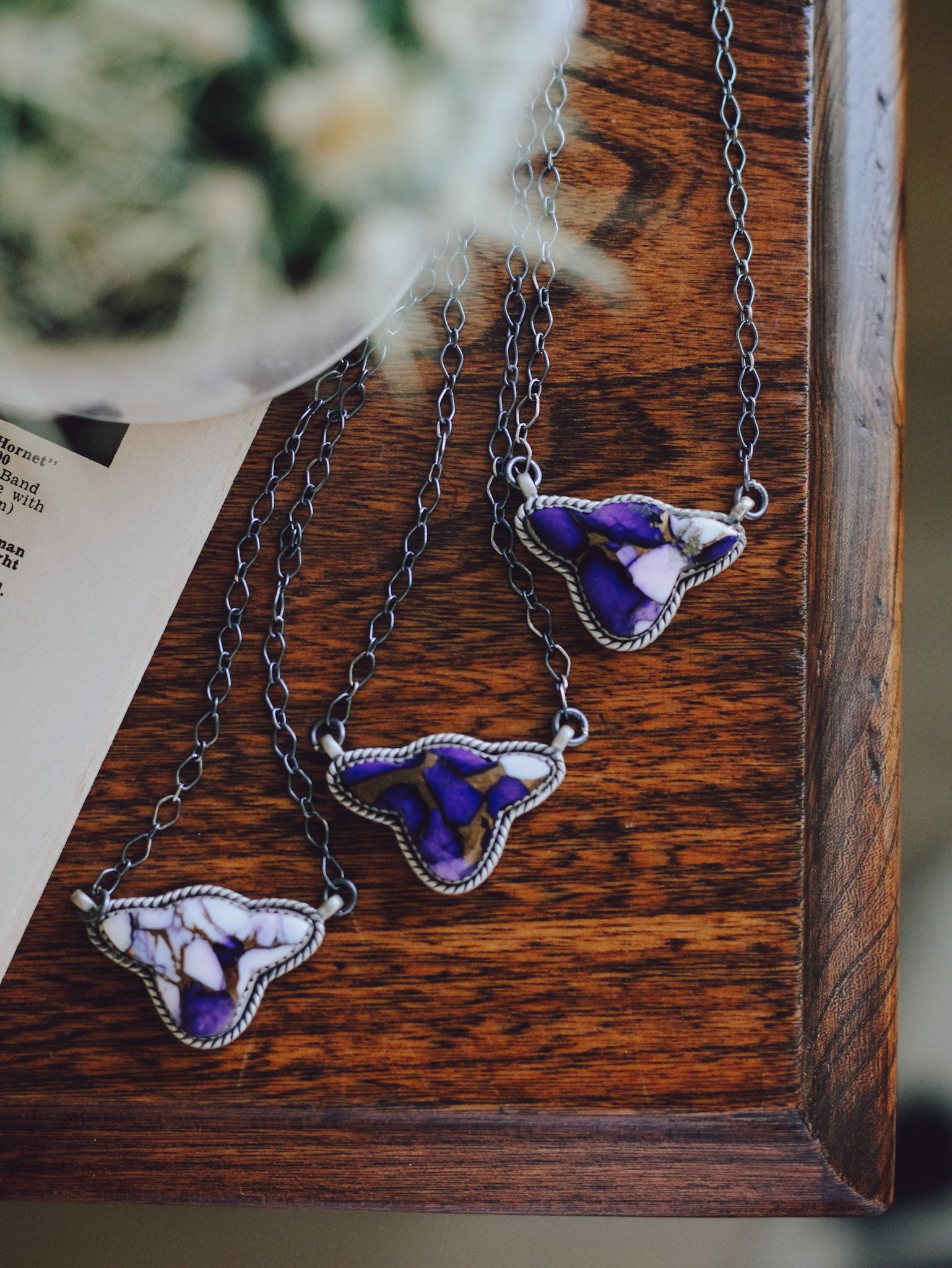
Violet Rose
Violet Rose is known for its dreamy palette, often showing soft purples, whites, and blues blended together in a marbled effect.
Unlike natural vein turquoise, compressed turquoise is created by binding smaller turquoise fragments together under pressure with resins or stabilizers. This process not only preserves the natural beauty of the stone but also enhances durability, allowing for larger, more colorful patterns.
Fun Fact: Because it’s made from real turquoise fragments, no two pieces of Violet Rose Compressed Turquoise ever look alike, giving every stone its own “cotton-candy swirl.”
Other Stones
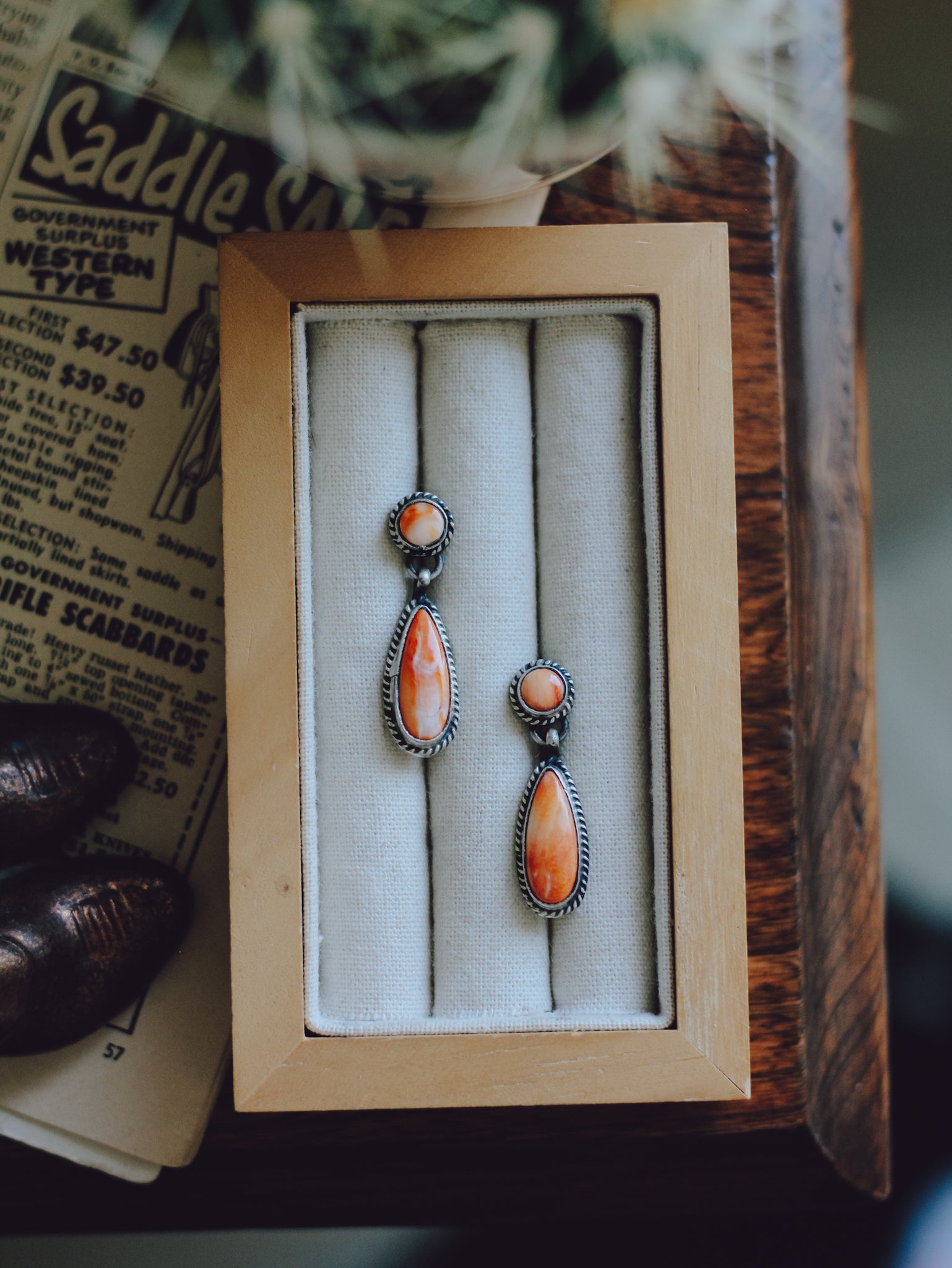
Spiny Oyster
Most commonly seen in orange, red, and purple, Spiny Oyster is found throughout the world in warm tropical waters. One can distinguish the shell from the commonly confused coral by white variations found throughout.
Known for its deep and vibrant hues, Spiny Oyster is featured alongside Turquoise in many modern jewelry designs. The majority of the Spiny Oyster used in Native American jewelry comes from sustainable farms in the Sea of Cortez on the Baja Peninsula.
Fun Fact: Spiny Oyster has been used by Native Americans in jewelry and artwork since pre-historic times.
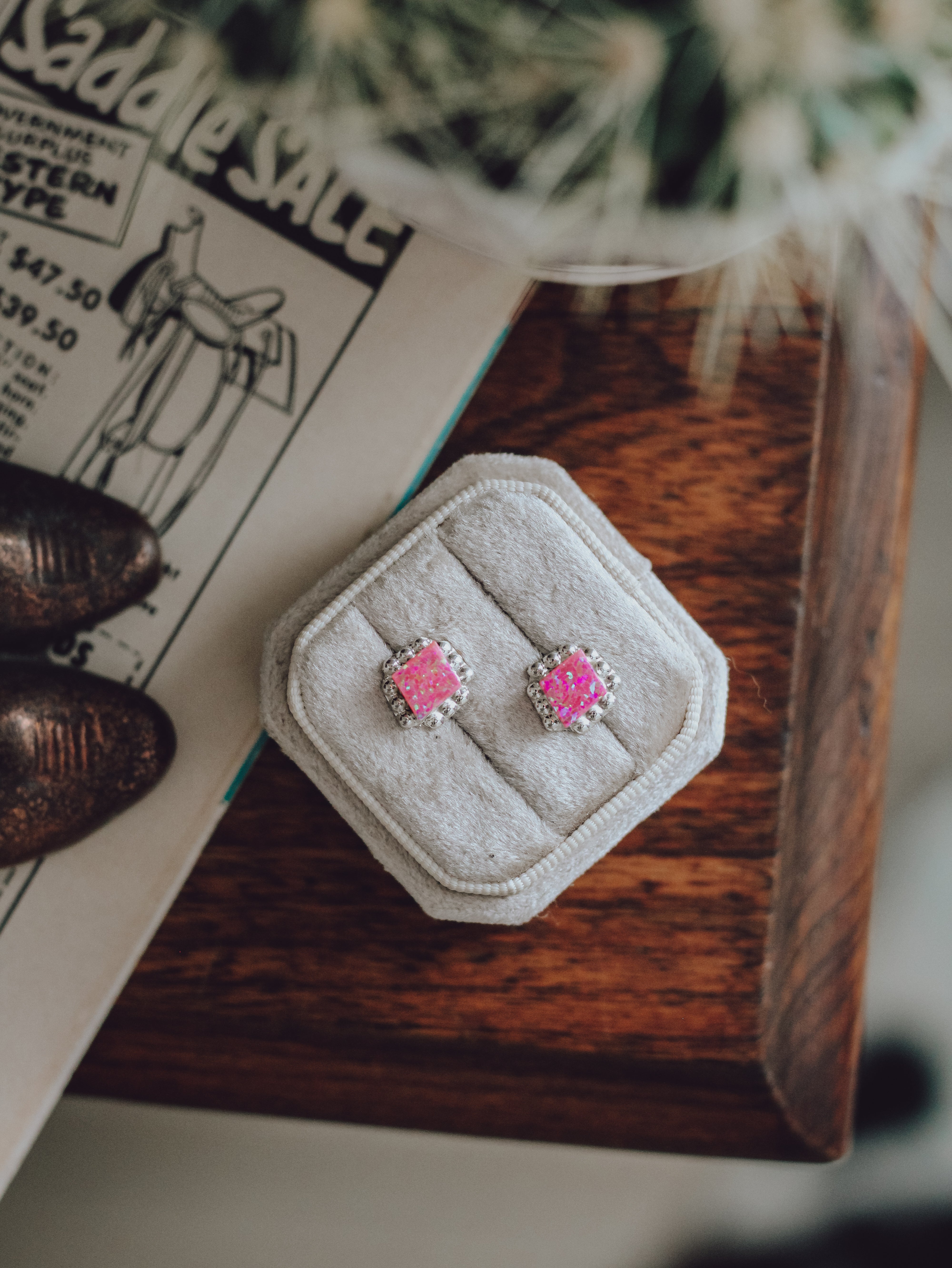
Opal
Opal is celebrated for its mesmerizing play-of-color — bright flashes of blue, green, pink, and orange dance across the stone as it catches the light. No two opals are alike, making each piece feel truly magical. Some opals have a milky white base, while others feature deep blacks, fiery oranges, or translucent crystal bodies.
This captivating stone has been prized for centuries and is often associated with creativity, passion, and good fortune.
Fun Fact: In ancient times, opal was considered the “Queen of Gems” because it displays the colors of all other precious stones.
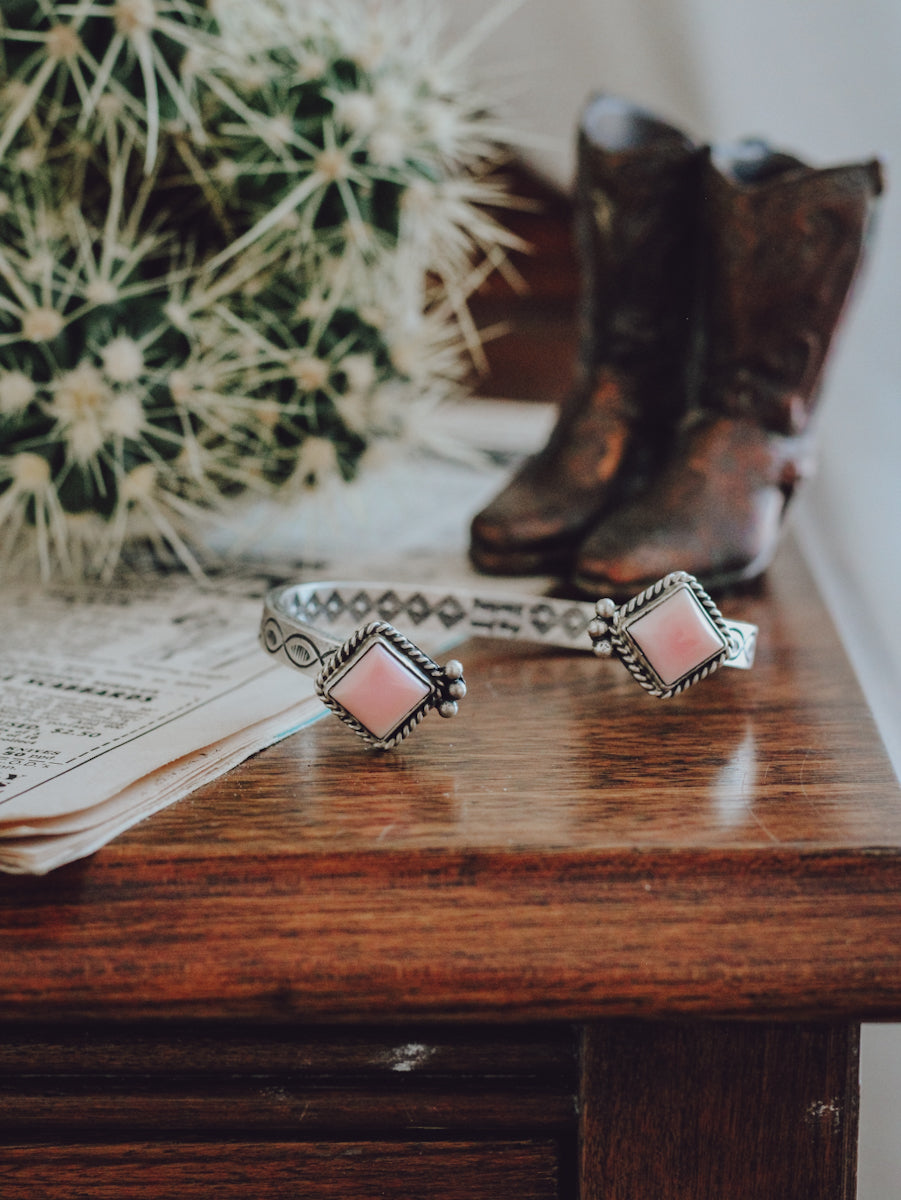
Pink Conch
Pink Conch is a beautiful organic gemstone known for its soft blush to peachy-pink hues, sometimes showing a rare flame-like pattern called “flame structure.”
It comes from the Queen Conch, a sea snail found in the Caribbean, Gulf of Mexico, and off the coast of Florida.
Pink Conch is becoming increasingly rare due to conservation efforts to protect marine life.
Unlike typical gemstones, Pink Conch is made of calcium carbonate, giving it a smooth, porcelain-like finish rather than a crystal structure.
Pink Conch has been used for centuries in Native American jewelry, especially by Navajo and Zuni artisans. It’s often paired with turquoise, coral, and shell in traditional inlay work.
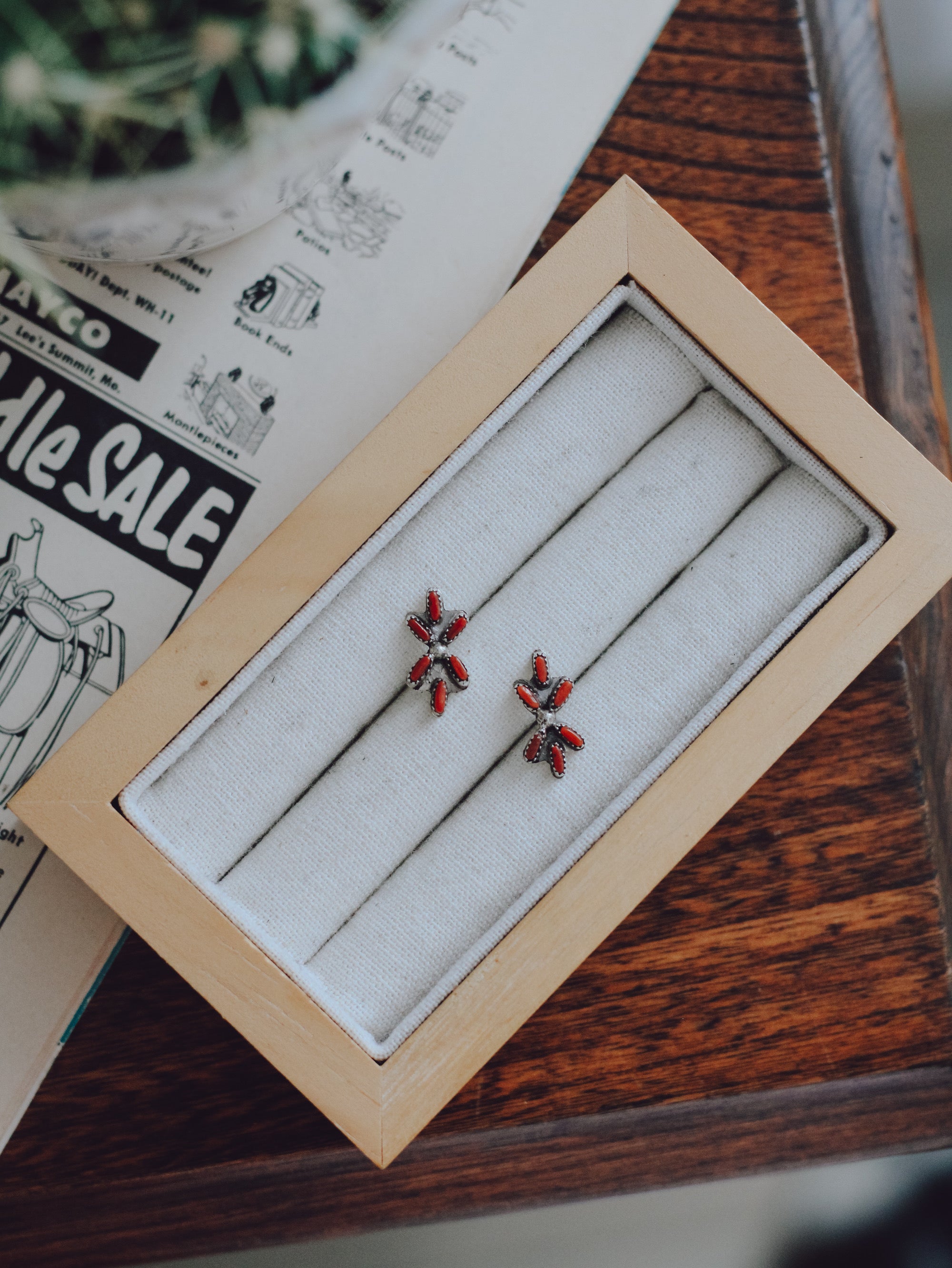
Red Coral
Red Coral is prized for its rich, vibrant red to deep rusty orange hues. Unlike gemstones formed in the earth, red coral comes from the sea. Polished to a smooth, glossy finish, red coral is often used in bold, statement jewelry.
Harvested primarily from the Mediterranean Sea and parts of Japan and Taiwan, red coral has been valued for thousands of years by cultures around the world. It’s especially cherished in Italian, Tibetan, and Native American jewelry traditions.
What makes red coral unique is its natural origin and deep, earthy red color that symbolizes strength, passion, and protection in many cultures.
